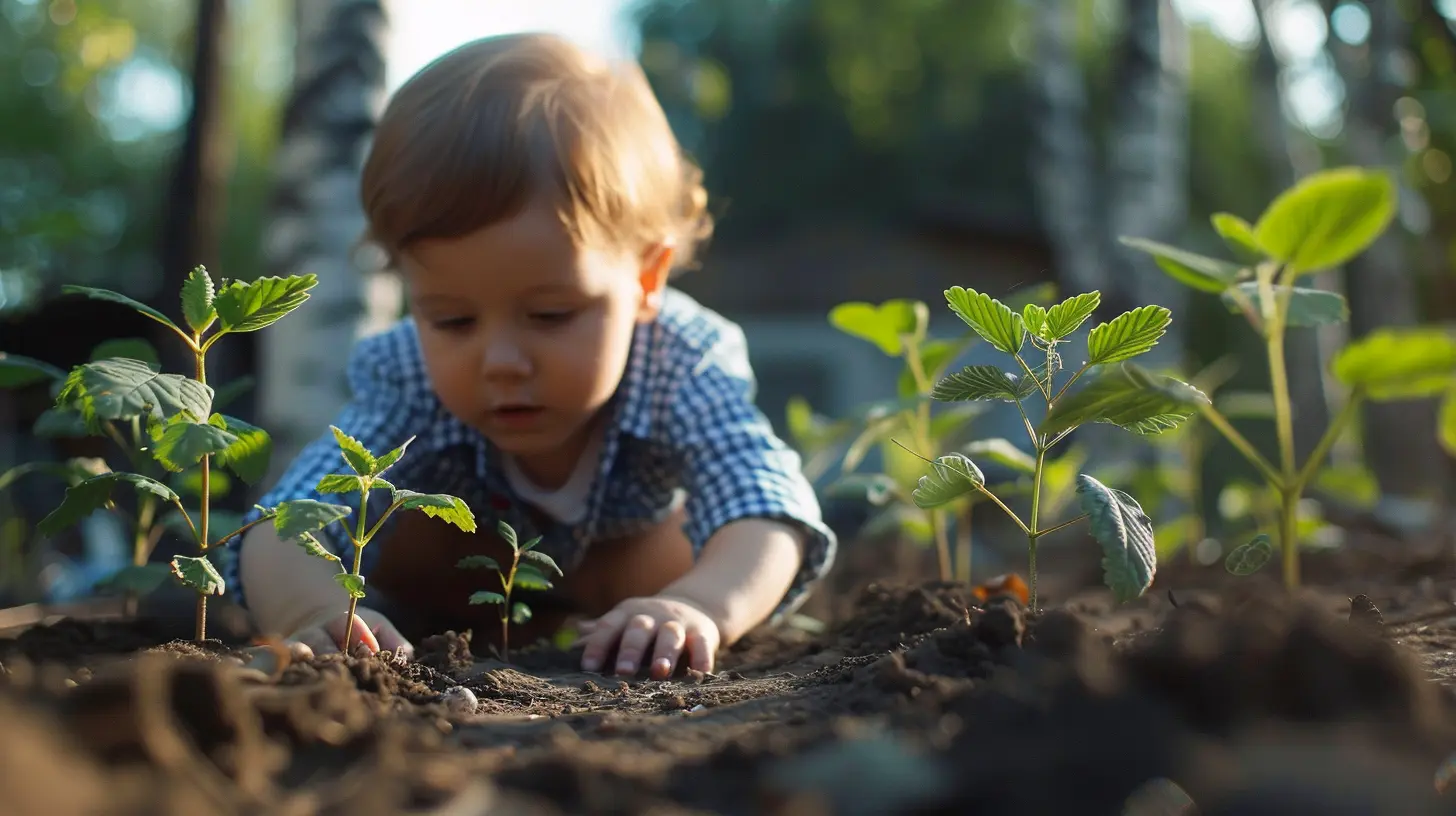How to Cultivate a Growth Mindset in Your Child from an Early Age
20 July 2025
Let’s be honest—being a parent is like juggling flaming swords while riding a unicycle. One of the biggest things we all worry about? Raising emotionally strong, confident kids who can handle life’s curveballs. The secret sauce? Teaching them a growth mindset.
If that phrase sounds like some fancy psychology term you should know but somehow don’t—don’t worry. By the end of this article, you’ll not only understand what a growth mindset is but also how to nurture it in your child from day one.
Grab your coffee (or reheat it for the third time), and let’s dive in.
What Is a Growth Mindset, Anyway?
A “growth mindset” is the belief that abilities and intelligence can be developed through effort, learning, and persistence. This idea was introduced by psychologist Carol Dweck and—spoiler alert—it totally flips the script on how we view success and failure.Think of it like this:
- A fixed mindset says: "I'm just not good at math."
- A growth mindset says: "I can get better at math if I keep practicing."
See the difference? One gives up before trying, the other keeps plugging away. And guess what? You can teach your kids to lean into that second way of thinking.
Why Does a Growth Mindset Matter for Kids?
Kids are constantly learning. Whether it's how to tie their shoes, ride a bike, or solve algebra equations—it’s all a process. Helping them understand that mistakes aren’t signs of failure but stepping stones to success can be a game-changer.Kids with a growth mindset:
- Handle setbacks more gracefully
- Have better self-esteem
- Take on challenging tasks
- Are more motivated to learn
That’s some solid parenting gold right there.
Start Early: Toddlers and Preschoolers Can Learn Growth Too
Now you might be thinking, “This sounds great for school-age kids, but my toddler just learned the word ‘no.’” Fair point. But here’s the thing—habits of thinking start early. Like, really early.Use Praise That Helps, Not Hinders
Instead of “You’re so smart!” go for something like:- “You worked really hard on that puzzle!”
- “I love how you kept trying even when that tower kept falling.”
This teaches them that effort = growth, not just talent.
Normalize Mistakes
When your little one spills their juice or scribbles all over the wall, take a deep breath (easier said than done) and say something like:- “Oops! That’s okay, we’ll clean it together. That’s how we learn.”
Seriously, even that small shift in how you react teaches resilience.
The Power of “Yet”
If there’s one word that belongs in every parent’s vocabulary, it’s yet.> “I can’t do this!” becomes “I can’t do this yet.”
That tiny word adds possibility—and possibility feeds a growth mindset. Start sprinkling it into your conversations, and you'll be amazed at how quickly your child picks it up.
Model Growth Mindset Yourself (Yep, That Means You Too!)
Spoiler alert: Kids are always watching us. Like, always. They see how you handle stress, how you react to failure, and whether you mope or bounce back. So if you want them to embrace a can-do attitude, you’ve gotta show them what that looks like.Mess up a recipe? Say, “Well, that didn’t turn out how I wanted, but now I know what to do differently.”
That’s powerful stuff. You’re showing them that mistakes aren’t dead ends—they’re detours.
Encourage Curiosity Over Perfection
We all want our kids to succeed. But when we make success the only goal, we teach them to fear failure. What if instead, we celebrated curiosity?Ask questions like:
- “What did you notice?”
- “What surprised you?”
- “What would you try differently next time?”
This gets them thinking like little scientists. It’s not about being perfect. It’s about exploring, messing up, and trying again.
Replace Labels with Descriptions
Avoid pigeonholing your child with labels—even the positive ones. When we say, “You’re the smart one” or “You’re such a natural artist,” we might mean well, but we’re boxing them in.Instead, describe what you see:
- “You asked some really thoughtful questions today.”
- “I noticed how carefully you blended those colors.”
See what we did there? We praised effort and observation, not fixed traits.
Let Them Struggle (Just a Little)
As parents, we have this wild instinct to swoop in and fix everything. Broken toy? We glue it. Struggled math problem? We solve it. But here’s the thing: struggle is where the magic happens.Let them wrestle with challenges a bit. Be their cheerleader, not their fixer.
Try saying:
- “I know this is tough, but I believe in you.”
- “Keep going—it’s okay to take your time.”
Sure, it might take longer, but they’ll come out stronger on the other side.
Celebrate the Process, Not Just the Result
We love gold stars and A+ grades, but narrowing our praise down to the outcome sends the wrong message. Instead, shine the spotlight on the journey.Kids will start to internalize that how they do something is just as important—if not more—than what they end up with.
Good process praise sounds like:
- “You stayed really focused while building that.”
- “You were super patient reading that long book.”
Encourage Setting “Doable” Challenges
Big tasks can feel overwhelming to little ones. Help your child break big goals into smaller, bite-size ones. Like turning a mountain into steppingstones.So instead of:
> “Learn to play the piano.”
Say:
> “Let’s practice one song this week.”
And then celebrate that win! Small successes build confidence and create momentum.
Teach Them to Talk Kindly to Themselves
Help your child recognize their inner voice—because oh boy, that voice can be a real crank if left unchecked.If your child says something like, “I’m terrible at this,” pause and say, “Would you talk to your friend like that?”
Teach them to reframe:
- “I’m not good at this.” → “I’m still learning this.”
- “I’ll never get it.” → “Every time I try, I get closer.”
This internal pep talk? It matters more than you think.
Books, Games, and Activities That Encourage Growth Mindset
Yes, you can absolutely reinforce this stuff through storytime and play! Here are a few fun ways to sneak growth mindset into your day:Awesome Growth Mindset Books:
- The Most Magnificent Thing by Ashley Spires- Beautiful Oops! by Barney Saltzberg
- Your Fantastic Elastic Brain by JoAnn Deak
Simple Games:
- Puzzle challenges- Build-the-tallest-tower contests
- “What If?” storytelling (practice flexible thinking)
These activities spark creativity, problem-solving, and perseverance—all cornerstones of a growth mindset.
Make Reflection a Daily Habit
Before bed, ask your child:- “What did you try today that was hard?”
- “What mistake did you learn from?”
- “What are you proud of today?”
It’s like planting seeds for tomorrow’s confidence. Give them space to think, laugh about mistakes, and high-five themselves for trying. That’s how resilience grows, one bedtime chat at a time.
Be Patient—Growth Takes Time
Finally, remember: cultivating a growth mindset isn’t a one-and-done deal. It's more like watering a plant. You won't see a towering sunflower overnight, but with enough light, love, and patience... it’ll get there.Stick with it, even when it feels like your words go in one ear and out the other.
Because one day, your child will say, “I can’t do this—yet,” and you’ll know all that gentle nudging worked.
Final Thoughts
Every child is born with boundless potential. Our job as parents is to help them believe it. By weaving growth mindset principles into your everyday parenting—through praise, modeling, encouragement, and patience—you’re giving your child the lifelong gift of resilience.And let’s be real: in a world full of challenges, that’s one of the most powerful tools they can have in their toolbox.
So go ahead—cheer for the effort, celebrate the struggle, and pass the popcorn when they try (and fail) to juggle. Because they’re growing, one wobble at a time.
all images in this post were generated using AI tools
Category:
Parenting SupportAuthor:

Tara Henson
Discussion
rate this article
1 comments
Tenley Frank
What a wonderful read! Cultivating a growth mindset in our little ones sets them up for lifelong success. Cheers to nurturing curiosity and resilience together! 🌱✨
August 9, 2025 at 3:35 PM

Tara Henson
Thank you! I'm glad you enjoyed the article. Nurturing curiosity and resilience truly lays the foundation for lifelong success! 🌱✨


